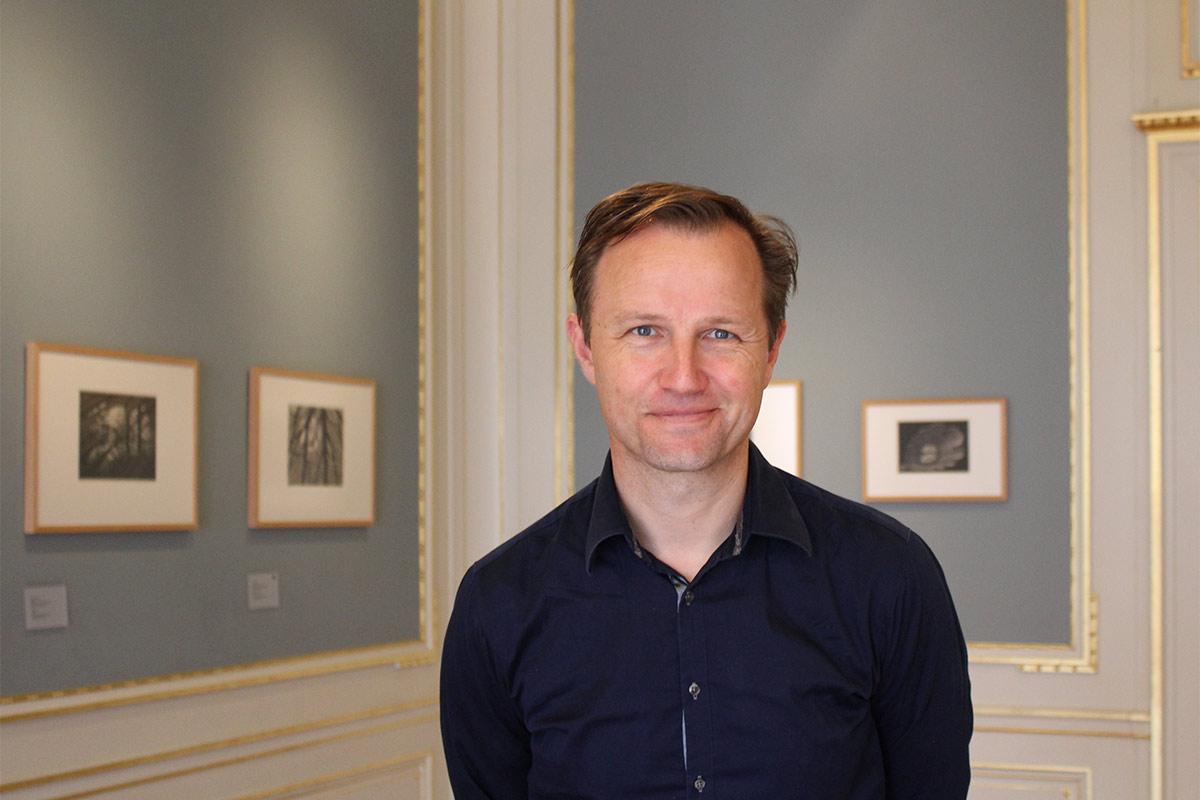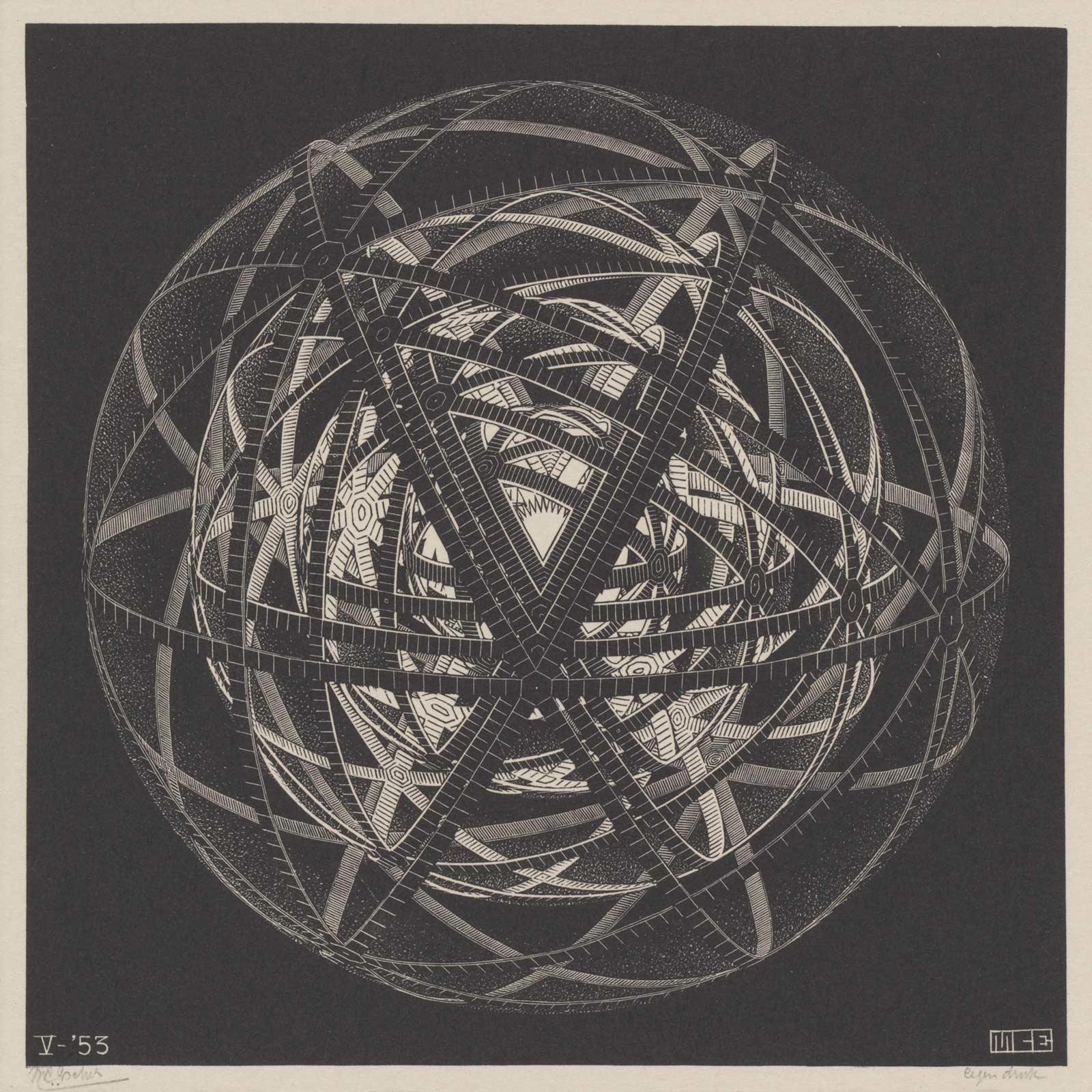
On 20 July 1969 Neil Armstrong took the first steps on the moon, exactly 50 years ago. He descended the stairs, set his foot on the powdery lunar surface and said: ‘That’s one small step for man, one giant leap for mankind’. The Apollo 11 mission still counts as one of the most iconic achievements of human ingenuity. A milestone commemorated in all sorts of ways. In film, with First Man (starring Ryan Gosling as Neil Armstrong) last year and with the impressive documentary Apollo 11 this year (‘the most poignant journey moviegoers have ever taken’ according to the Washington Post).* In the visual arts there's the La Lune exhibition at the Grand Palais in Paris showing how the moon has fascinated artists for centuries. On the Internet is the website Apollo 11 in real time allowing visitors to relive the mission that took place 50 years ago in real time. There are exhibitions and lectures about the moon (including in the Foundation Space Museum in Aviodrome). Several observatories are organising commemorative days around the historic event.
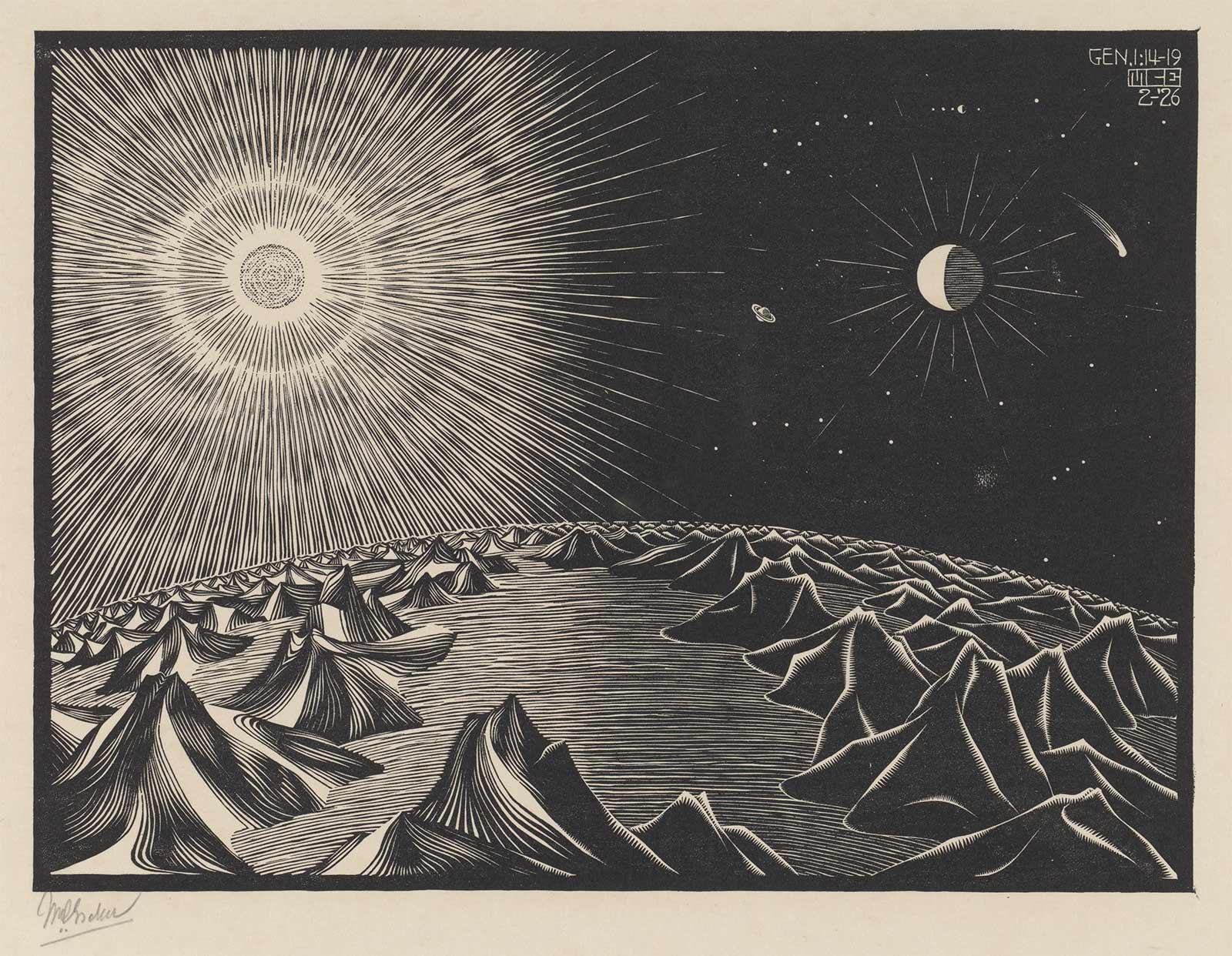
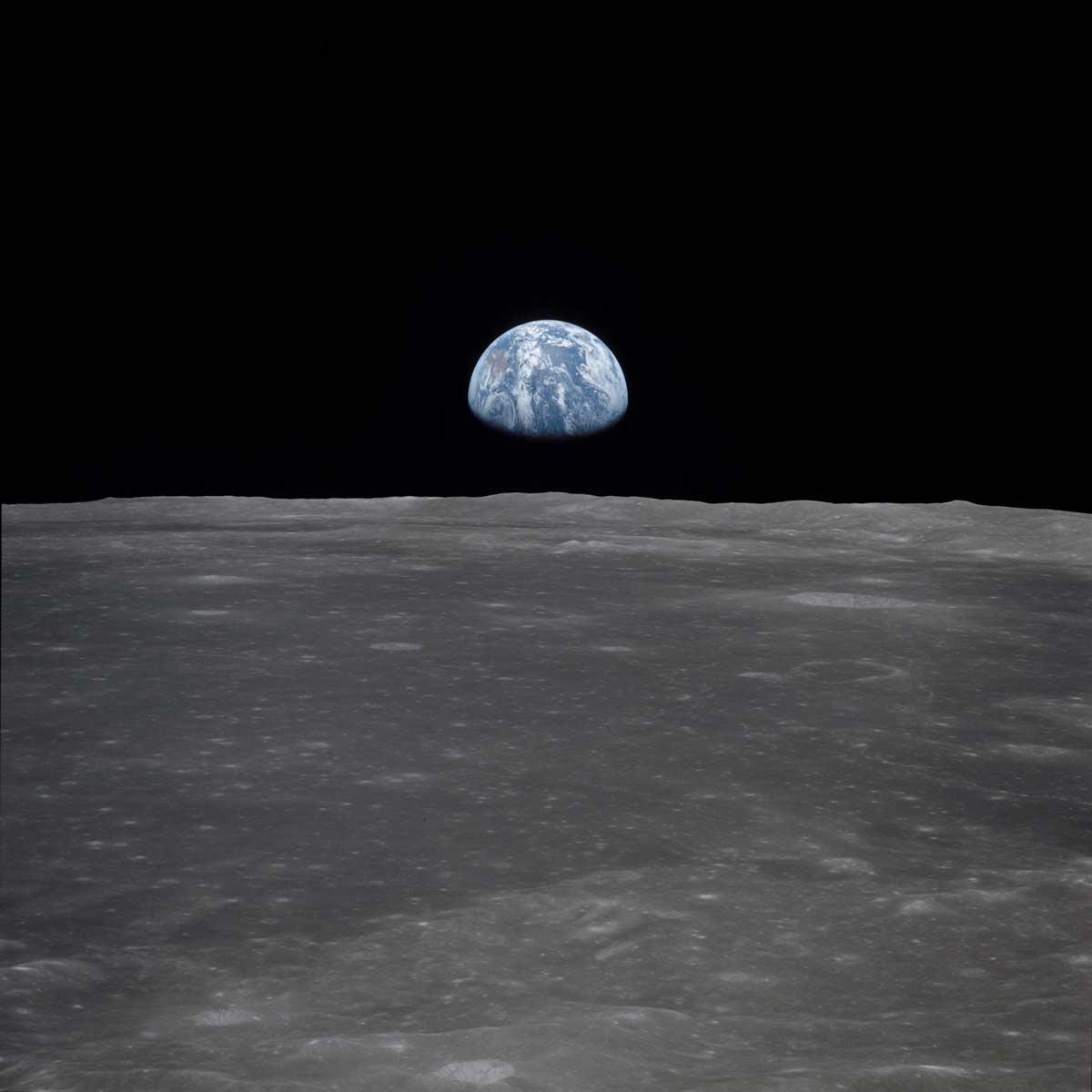
We do not know whether M.C. Escher watched the moon landing on the night of 20 to 21 July, but it is highly likely. Astronomy fascinated him throughout his life and he could gaze for hours at the night sky in search of stars and planets. In March 1961 he gave a presentation for the Baarn Rotary Club in which he spoke passionately about his observations. Observations he had been making for quite some time, but which had become all the more evident to him on a voyage to Canada in the autumn of 1960. He pondered the significance the moon for humankind, dividing people into four categories: poets (for whom the moon becomes an extension of the self), astronomers (for whom the moon is an object of study that needs to be fathomed), indifferent people (for whom the moon is only a somewhat impractical street lamp) and sensitive people (for whom the moon is an object contemplated without much prior knowledge).
‘When I was sat there on my cargo ship marvelling at the distance between the moon and myself to such an extent it almost frightened me, my gaze travelled towards her, as it were, along a long, straight line. I shot the arrow of my imagination at her. Breathless with wonder, I experienced her silence, her apparent immobility, her perfect equilibrium in space. She became a symbol for me, or, rather, a demonstration of gravity, which is not a boring, cerebral concept, but another living, thrilling enigma’.**


Escher and the moon
Escher depicted the moon in his graphic work a number of times. The colored woodcut Sun and Moon is the most obvious example, as the title confirms. The moon can be seen mirrored in Puddle. In the fourth of his series of woodcuts on Creation, Escher shows the moon beside the sun with the rough surface of the earth, strewn with mountain ranges in the process of formation as a dark foreground. It is reminiscent of the famous photo that was taken during the Apollo 11 mission, albeit the other way round: the surface of the moon constitutes the foreground in the Apollo 11 photo, with the earth being the celestial body in the background. And in Other World (1947), a lunar surface peppered with craters is visible through the windows of the brick building which—through a leap of the imagination—could also be regarded as a lunar lander.
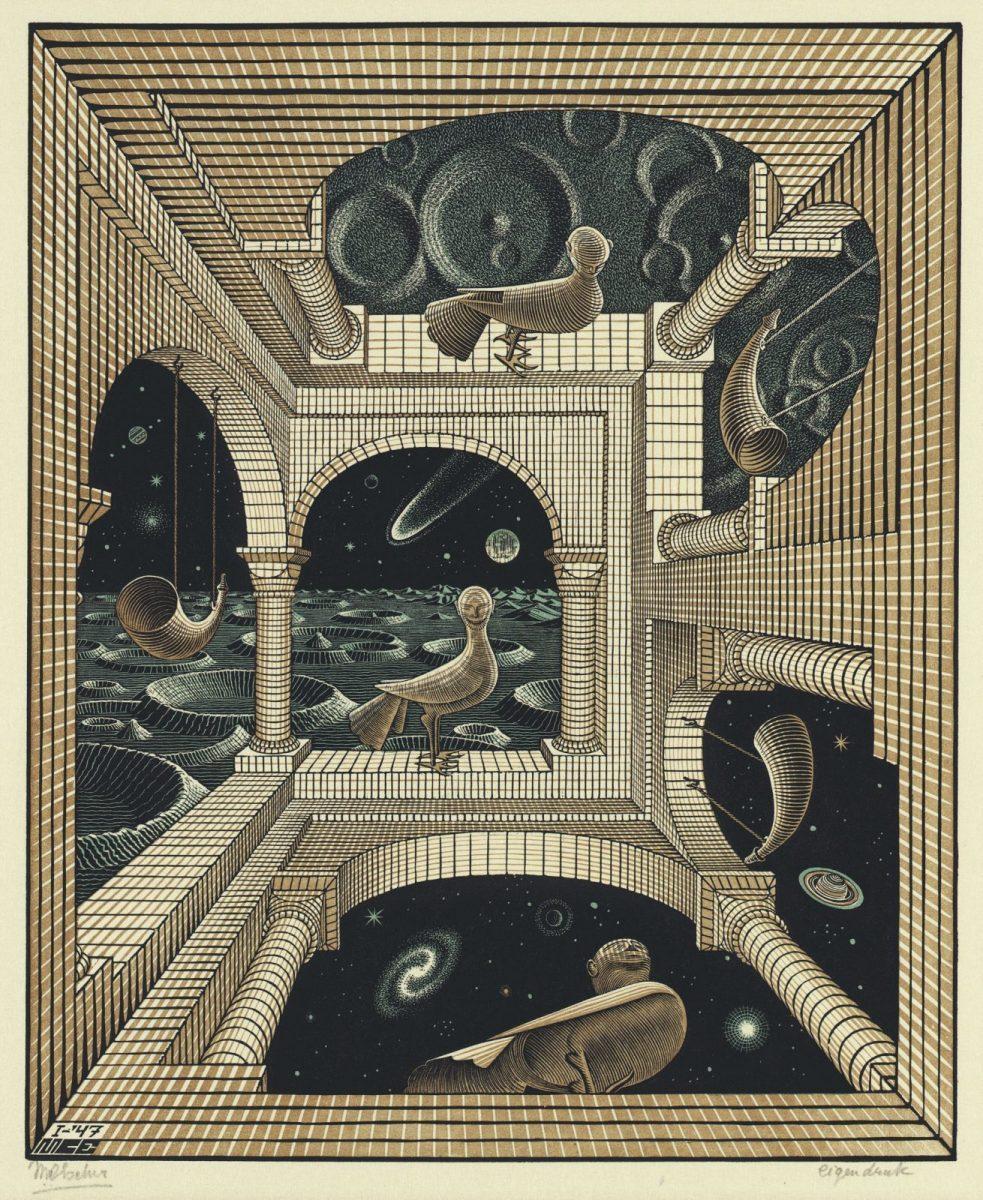
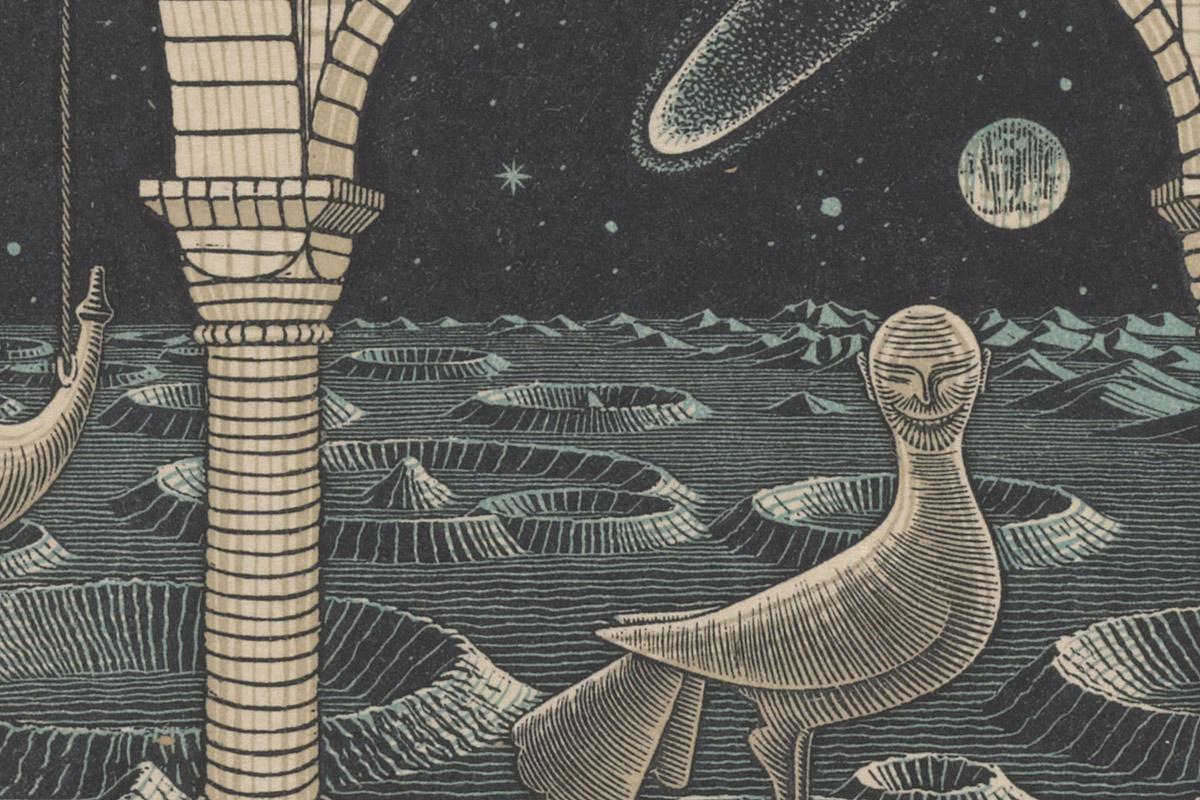
The nighttime moonlight permeates his prints too. It is tempting to see the presence of moonlight in almost all of his woodcuts and wood engravings (in which there is more contrast between light and dark than there is in a lithograph). The black and white contrast immediately evokes the contrast of moonlight and the darkness of night. However, this is not what Escher intended in most cases. By contrast, the light of the moon is clearly present in the series of woodcuts he made about Rome in 1934. His second version of San Gimignano, in which the towers of the Tuscan town rise up like pillars of light in the dark night, is also intended as a night view
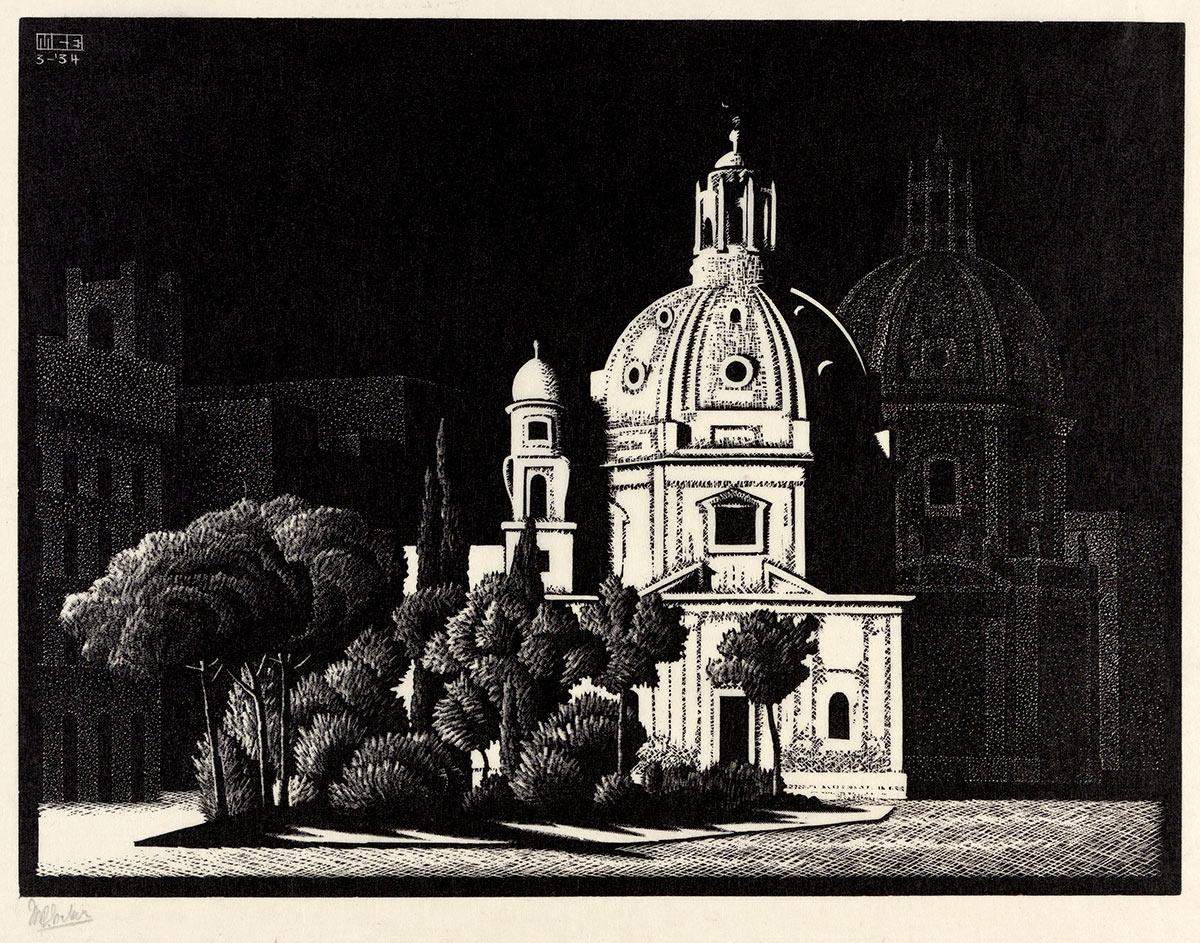
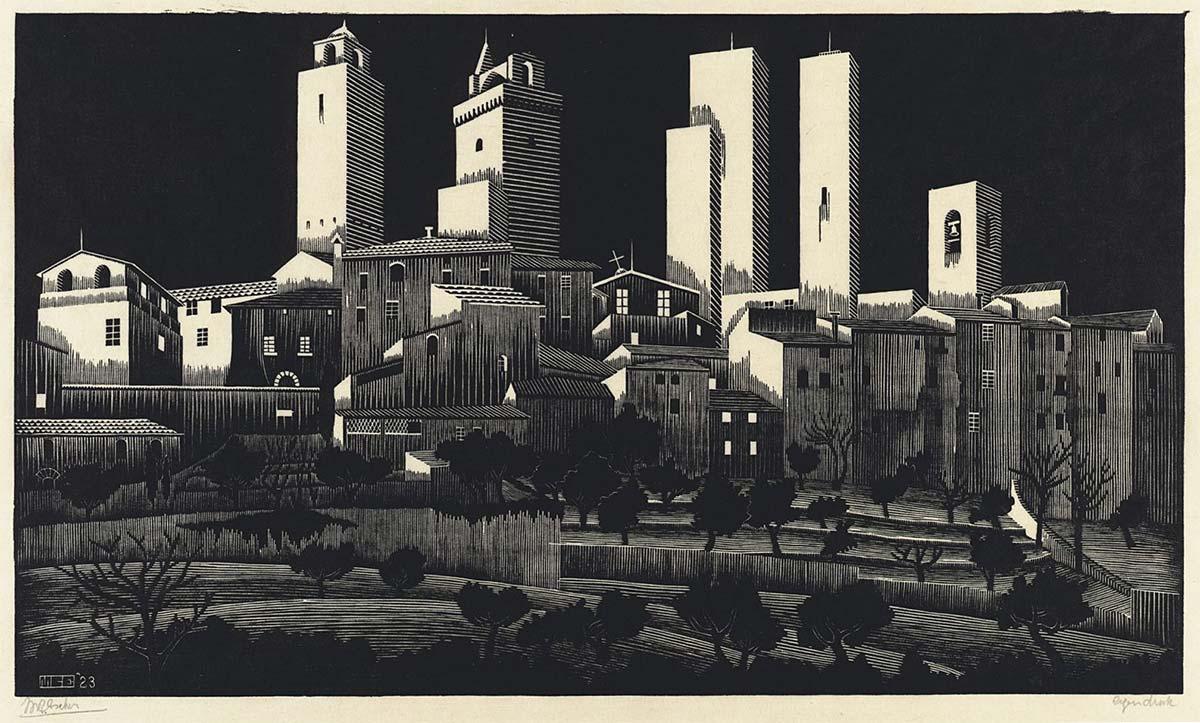
[*] The Washington Post, February 25, 2019
[**] Lecture for the Baarn Rotary Club, March 1961
More Escher today
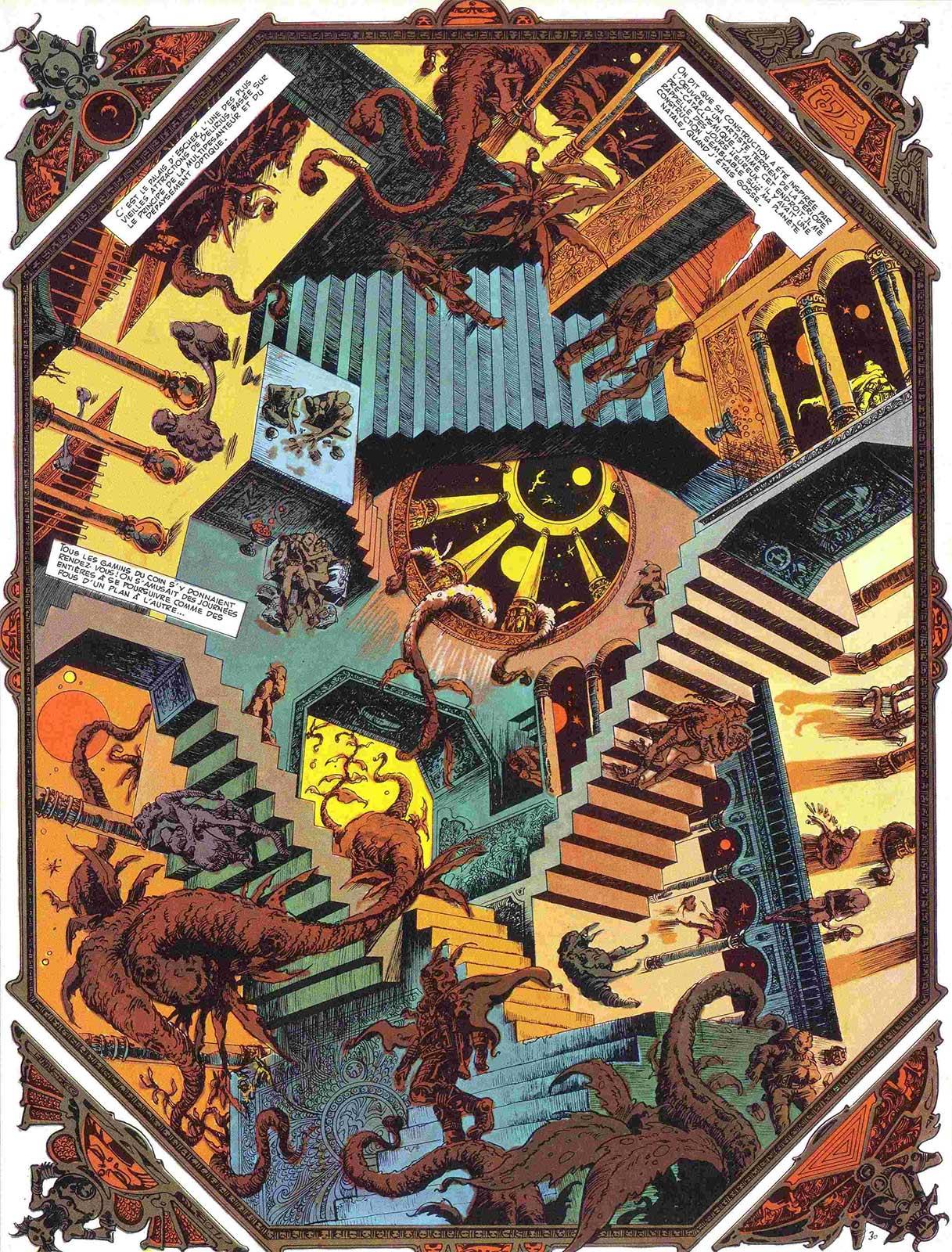
Lone Sloane's Relativity

J.R.R. Tolkien
‘Imagine being without Tolkien! The lonely evenings are the most difficult for my patience. But he helps me through them with his fantastic world of Hobbits, Elves, Dwarves and good wizards, contrasting with the most horrible, diabolical monsters’.This ode to the British writer and academic John Ronald Reuel Tolkien (1892-1973), who became world famous for his fantasy cycle The Hobbit, The Lord of the Rings and the posthumously published The Silmarillion, is found in a letter dated 29 June 1962 that Escher wrote to his son George. His son Arthur had treated him to a copy of The Hobbit earlier that year, a book Escher read voraciously whilst bedridden, when reading became a useful means of escape.
